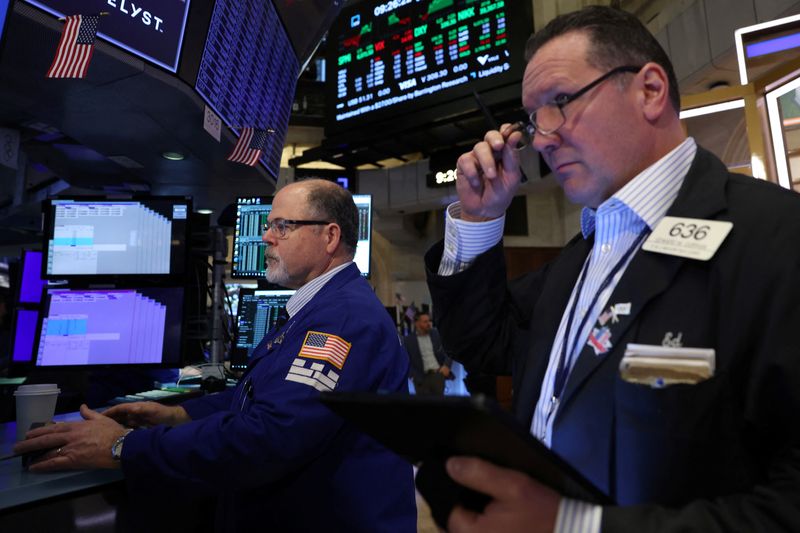Wall Street advances with focus on new US administration’s trade policy By Reuters

By Sinéad Carew and Johann M Cherian
(Reuters) -Wall Street’s main indexes rose on Tuesday, with the and the Dow hitting their highest in more than a month, as investors assessed Donald Trump’s first actions as U.S. president and breathed relief that he did not start his second term with blanket tariff increases.
Trump did not lay out any concrete plans on the universal tariffs and additional surcharges on close trade partners as previously promised, but said he was thinking about imposing duties on Canadian and Mexican goods as early as Feb. 1.
While investors remain cautious about tariffs and the potential for a global trade war pushing inflation higher, brokerage Goldman Sachs lowered its forecast for the chances of a universal tariff this year to 25% from about 40% seen in December.
“There was a definite relief and a bit of surprise that tariffs weren’t called out in the first round of executive actions that happened yesterday,” said Carol Schleif, chief market strategist at BMO Private Wealth. “Markets are leaping to the conclusion, probably rightfully so, that the administration will take a more nuanced approach.”
Investors hope the new administration will use the threat of tariffs as a negotiating tactic and take “a scalpel and not a sledgehammer to tariffs,” Schleif said.
Last week, the S&P 500 and Dow registered their biggest weekly percentage gains since early November, helped by strong bank earnings and signs that underlying inflation was cooling.
Schleif also noted a healthy broadening of the market rally on Tuesday, with the more domestically focused small-cap index outperforming larger cap indexes, with a 1.7% gain and a more than one-month high.
At 2:11 p.m. EST (1911 GMT) the rose 466.30 points, or 1.07%, to 43,954.13, the S&P 500 gained 52.48 points, or 0.88%, to 6,049.14 and the gained 150.74 points, or 0.77%, to 19,780.94.
Ten of the S&P 500’s 11 industry indexes rose, with utilities the biggest gainer, up 1.97%, followed by industrials with a 1.94% increase. The biggest gainer in industrials was 3M, which rallied 5.5% after reporting upbeat fourth-quarter profits.
While the tech sector managed a small gain, heavyweight Apple (NASDAQ:) was down 3.8% after brokerage Jefferies cut its rating to “underperform.”
The sole sector decliner was energy, down 0.7%.
Shares of automakers, which are most sensitive to tariffs due to their vast supply chains, rose. Ford (NYSE:) gained 2%, while General Motors (NYSE:) added 5.6%, following a rating upgrade by Deutsche Bank (ETR:).
During the first year of Trump’s earlier administration, the S&P 500 rose 19.4%. The benchmark index rose nearly 68% through his four-year term, but saw bouts of volatility, stemming in part from a trade war Trump fought with China.
However, inflation is still above the Federal Reserve’s 2% target, fuelling worries that the new administration’s policies could delay the central bank’s pace of monetary policy easing.
Economists see the Fed leaving borrowing costs unchanged when it meets next week and traders see the first interest rate cut coming in June, according to CME Group’s (NASDAQ:) FedWatch tool.
In other individual stocks, Walgreens fell 13.8% after the Justice Department accused it of filling unlawful prescriptions for addictive painkillers and other drugs.
Moderna (NASDAQ:) rose more than 6% after securing $590 million from the U.S. government to hasten development of its bird flu vaccine.

Advancing issues outnumbered decliners by a 4.32-to-1 ratio on the New York Stock Exchange, where there were 216 new highs and 33 new lows.
On the Nasdaq, 3,109 stocks rose and 1,269 fell as advancing issues outnumbered decliners by a 2.45-to-1 ratio. The S&P 500 posted 39 new 52-week highs and no new lows while the Nasdaq Composite recorded 109 new highs and 68 new lows.